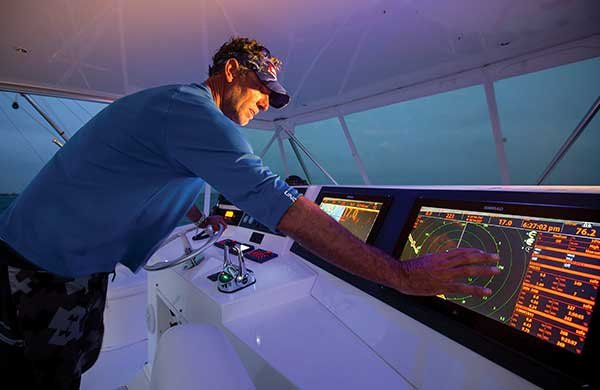
How Radar Works
Before we delve into using radar, let's make sure you have a solid understanding of the basics. In a nutshell, radar sends out a transmission in the form of a high-frequency radio wave and "listens" for it to be bounced back by a solid object. Most traditional radar units send out this transmission in a burst of power, then calculate the time delay of any returned signals to calculate distance to the target. As a general rule, this type of radar provides the best long-range abilities. Unfortunately, that big burst of power creates something called a "main bang" 360 degrees around your boat. This is a visionless dead-zone that can cover 100 feet or more. So while long-range performance is excellent, very short ranges are hampered.
Instead of using strong bursts of power, some newer solid-state radar units instead calculate the difference between transmitted and received frequencies. The advantage is better target discrimination at short range; there's no big burst, so there's no main bang. Their range, however, is often more limited than that of traditional radar.
The latest and greatest units may combine these two technologies, and some also apply Doppler enhancements. Remember learning about the Doppler effect in high school? As an ambulance gets closer and closer, the frequency of its siren sounds higher and higher, and as it gets farther away, the frequency sounds lower and lower. Many of the latest marine radar use this same principle to help determine the speed and hazard-level of moving targets.